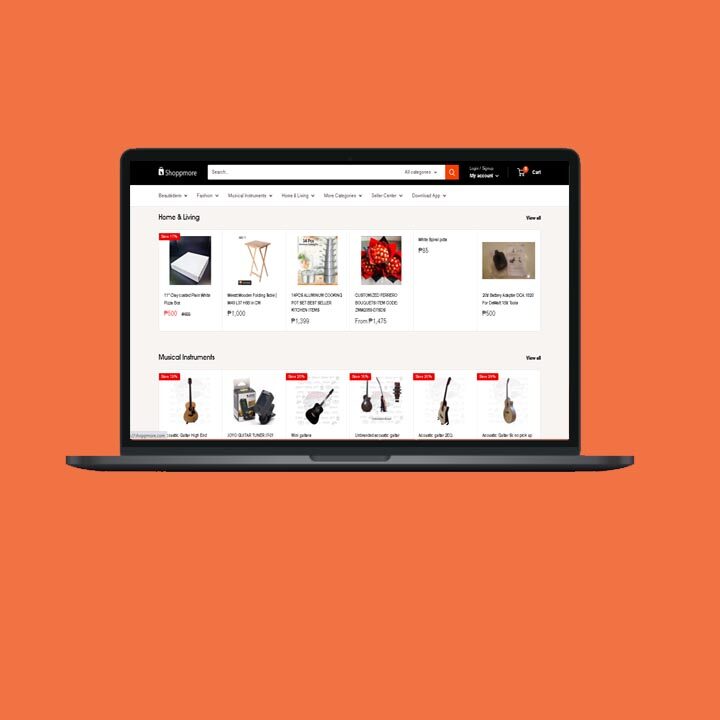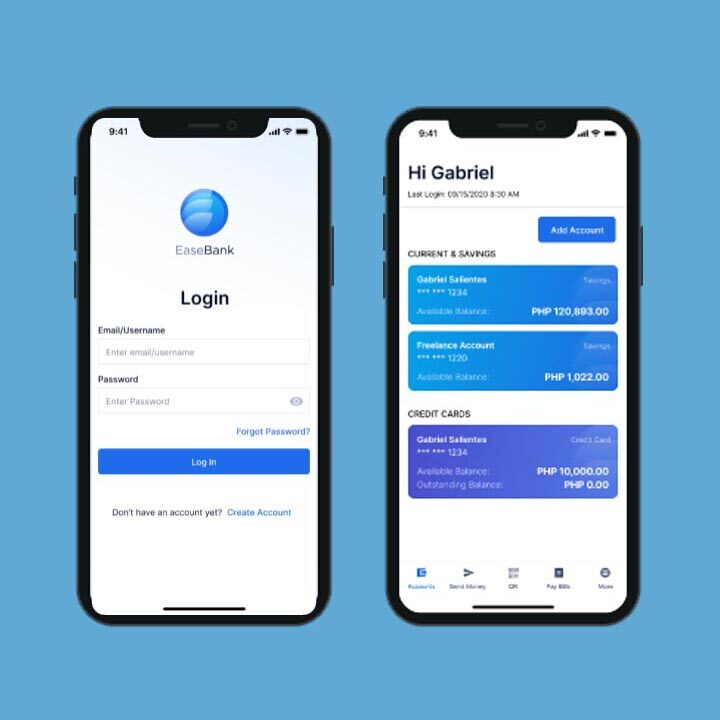Revolutionizing Retail: How Ecommerce Companies in the Philippines are Shaping the Industry
The retail landscape in the Philippines is undergoing a dramatic shift, thanks to the rise of ecommerce companies. With more Filipinos embracing online shopping, these companies are revolutionizing the way consumers purchase products and services. This article explores how ecommerce companies in the Philippines are shaping the industry and transforming the shopping experience.
From traditional brick-and-mortar stores to virtual storefronts, ecommerce companies are capitalizing on technology and changing consumer preferences. Leveraging the power of the internet, these companies offer a wide range of products at competitive prices, providing convenience and accessibility to consumers across the country. Whether it’s fashion, electronics, or groceries, people can now shop for their favorite items from the comfort of their own homes.
Moreover, ecommerce companies are using innovative strategies to attract customers and build brand loyalty. With targeted marketing campaigns, personalized recommendations, and seamless user experiences, they are creating a new standard in customer satisfaction.
The ecommerce revolution is not only influencing consumer behavior but also reshaping the retail industry as a whole. Traditional retailers are now forced to adapt and find ways to compete in this digital marketplace. As ecommerce companies continue to thrive in the Philippines, the future of retail is undeniably being shaped by their innovative approach and vision for a more connected and convenient shopping experience for all.
The growth of ecommerce in the Philippines
Ecommerce has experienced exponential growth in the Philippines in recent years. With the increasing availability and affordability of smartphones and internet access, more Filipinos are turning to online platforms to meet their shopping needs. According to a report by Statista, the ecommerce market in the Philippines is rapidly growing
This growth can be attributed to several factors. First, the convenience of online shopping has made it an attractive option for busy Filipinos who no longer have to contend with traffic and long queues in physical stores. Second, the wide variety of products and services available online allows consumers to find exactly what they’re looking for, often at better prices compared to traditional retail stores. Finally, the increasing trust in online payment systems and reliable logistics providers has further boosted the confidence of Filipino consumers in ecommerce.
Key players in the Philippine ecommerce industry
Several key players have emerged in the Philippine ecommerce industry, each contributing to the growth and transformation of the retail landscape. One of the most prominent players is Lazada, an online marketplace that offers a wide range of products from various sellers. Lazada has become a household name in the Philippines, known for its frequent sales and reliable delivery service.
Another major player is Shopee, a mobile-first ecommerce platform that has gained popularity for its user-friendly interface and interactive features. Shopee has successfully engaged with Filipino consumers through creative marketing campaigns and partnerships with local celebrities.
In addition, there are niche players such as Zalora, which focuses on fashion and beauty, and grocery delivery services like MetroMart and HappyFresh. These companies cater to specific consumer needs and have carved out their own market share in the ecommerce industry.


Advantages of ecommerce for businesses
Ecommerce offers numerous advantages for businesses, particularly in the Philippines where traditional retail can be challenging due to geographical limitations and high rental costs. By operating online, businesses can reach customers across the country without the need for physical stores in every location. This significantly reduces overhead expenses and allows businesses to allocate resources more efficiently.
Furthermore, ecommerce provides businesses with valuable data and insights into consumer behavior. With advanced analytics tools, businesses can track customer preferences, purchase patterns, and demographic information, enabling them to tailor their marketing strategies and product offerings accordingly. This data-driven approach gives businesses a competitive edge and allows for more targeted and personalized marketing campaigns.
Unlike brick-and-mortar stores with fixed operating hours, ecommerce companies can serve customers at any time, allowing for increased sales and customer satisfaction. This flexibility also extends to customers who can shop whenever it is convenient for them, further enhancing the convenience factor of online shopping.
Challenges faced by ecommerce companies in the Philippines
While ecommerce is thriving in the Philippines, it is not without its challenges. The archipelagic nature of the Philippines presents unique challenges in terms of transportation and delivery. Ensuring timely and efficient deliveries to customers across different islands can be a logistical nightmare for ecommerce companies. However, with the emergence of third-party logistics providers and investments in improving infrastructure, this challenge is gradually being addressed.
Online scams and fraudulent activities have made some consumers wary of sharing their personal and financial information online. Ecommerce companies need to invest in robust security measures and educate consumers about the safety of online transactions to build trust and confidence.
Moreover, the digital divide still exists in the Philippines, with a significant portion of the population lacking access to the internet or the necessary digital literacy skills. Ecommerce companies need to find innovative ways to bridge this gap and make online shopping more accessible to all Filipinos.
Innovative strategies used by successful ecommerce companies in the Philippines
Successful ecommerce companies in the Philippines employ innovative strategies to attract customers and build brand loyalty. One such strategy is targeted marketing campaigns. By leveraging data analytics, ecommerce companies can identify customer segments and tailor their marketing messages accordingly. This personalized approach increases the chances of converting leads into customers and encourages repeat purchases.
Another strategy is the use of personalized recommendations. Ecommerce platforms employ algorithms that analyze customer browsing and purchasing history to provide personalized product recommendations. This not only enhances the shopping experience for customers but also increases the average order value and customer satisfaction.
Seamless user experience is also a key focus for successful ecommerce companies. From intuitive website designs to easy navigation and fast-loading pages, these companies prioritize user experience to ensure a smooth and enjoyable shopping journey for their customers. This includes features such as multiple payment options, easy returns and refunds, and reliable customer support.


Impact of ecommerce on traditional retail in the Philippines
The rise of ecommerce has had a significant impact on traditional retail in the Philippines. Traditional retailers are now faced with the challenge of adapting to the changing consumer landscape or risk being left behind. Many brick-and-mortar stores have started to establish their online presence and offer omnichannel shopping experiences to stay competitive. This integration of offline and online channels allows retailers to reach customers through multiple touchpoints and provide a seamless shopping experience.
Furthermore, traditional retailers are reevaluating their business models and exploring partnerships with ecommerce platforms. By leveraging the reach and resources of ecommerce companies, traditional retailers can tap into the growing online market while still maintaining their physical stores.
However, some traditional retailers have struggled to keep up with the fast-paced nature of ecommerce. The high costs associated with setting up and maintaining an online presence, as well as the need to invest in digital marketing and logistics, can be daunting for small retailers. As a result, consolidation within the retail industry is expected, with larger players acquiring smaller retailers or partnering with ecommerce platforms for sustainability.
Ecommerce trends to watch out for in the Philippines
As ecommerce continues to evolve in the Philippines, several trends are emerging that are worth watching. One of these trends is the rise of social commerce. Filipinos are among the most active social media users in the world, and ecommerce companies are capitalizing on this by integrating social media platforms with their online stores. This allows consumers to discover and purchase products directly within their favorite social media apps, creating a seamless shopping experience.
Another trend is the growth of mobile commerce or m-commerce. With the majority of Filipinos accessing the internet through their smartphones, ecommerce companies are optimizing their platforms for mobile devices. This includes developing mobile apps and mobile-friendly websites that offer a smooth and intuitive shopping experience on smaller screens.
Lastly, sustainability and ethical consumption are becoming increasingly important to Filipino consumers. Ecommerce companies are responding to this trend by offering eco-friendly and ethically sourced products. By aligning with consumer values, these companies are able to attract a growing segment of conscious shoppers.
Tips for starting an ecommerce business in the Philippines
For aspiring entrepreneurs looking to start an ecommerce business in the Philippines, there are several tips to keep in mind. First, it is important to conduct thorough market research to identify gaps and opportunities in the market. Understanding consumer preferences, competition, and logistics challenges will help in developing a solid business plan.
Second, building a strong online presence is crucial. This includes investing in a user-friendly website or app, optimizing for search engines to improve visibility, and engaging with customers through social media and online marketing campaigns. Building a brand that resonates with the target audience is also key to standing out in a crowded market.
Third, partnering with reliable logistics providers is essential for a smooth customer experience. Ensuring timely deliveries and easy returns and refunds will help build trust and loyalty among customers.
Lastly, continuously innovating and staying ahead of trends is vital in the fast-paced world of ecommerce. Keeping an eye on emerging technologies and consumer preferences will help ecommerce businesses stay relevant and competitive.
Conclusion
The ecommerce revolution in the Philippines is reshaping the retail industry and transforming the way Filipinos shop. Ecommerce companies are capitalizing on technology and changing consumer preferences to offer convenience, accessibility, and a personalized shopping experience. While there are challenges to overcome, the future of retail in the Philippines undeniably lies in the hands of these innovative ecommerce companies. As they continue to thrive and shape the industry, traditional retailers must adapt and find ways to compete in this digital marketplace. The retail landscape is undergoing a profound transformation, and ecommerce is at the forefront of this revolution.
Contact us at info@26i.f8e.myftpupload.com or submit a contact form here.







